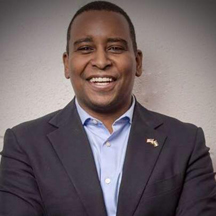The blue wave had some Black riders. Every African American Democrat in the House running for re-election in this year’s midterms won his or her race. In addition, voters sent nine new Black members, all Democrats, to Congress. As a result, the number of Black House members will grow to an all-time peak of 55, even if, as appears possible, both Black Republicans (Utah’s Mia Love and Texas’ Will Hurt) lose their seats. (Late Note: Only Love lost.)
What’s unusual about the nine new members is that all of them prevailed in predominantly White and mostly suburban districts. Five of the nine are women.
The Nine New Democratic Black Congress Members Come From Heavily White Districts

For most of the 20th century, there were few Black members of Congress. In 1950, only two African Americans (William Dawson of Chicago’s South Side and Adam Clayton Powell of Harlem) served in the House. The civil rights movement and the 1965 Voting Rights Act led to a significant upsurge of Black office holders. By 1970, the number of Blacks in the House had grown to ten and by 1990 it reached 25.
Then and now, most Black Congress members represent majority-Black districts, although some today represent districts where Blacks and Latinos form the majority. Of the 47 current Black members in Congress, only six represent districts where Whites represent at least half of the population.
Read More
Then and now, most Black Congress members represent majority-Black districts, although some today represent districts where Blacks and Latinos form the majority. Of the 47 current Black members in Congress, only six represent districts where Whites represent at least half of the population.
Read More
Advertisers | Contact Us | Events | Links | Media Kit | Our Company | Payments Pier
Press Room | Print Cover Stories Archives | Electronic Issues and Talk Radio Archives | Writer's Guidelines






